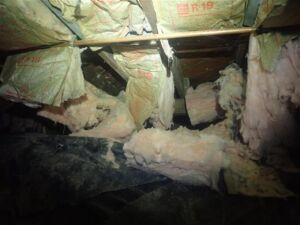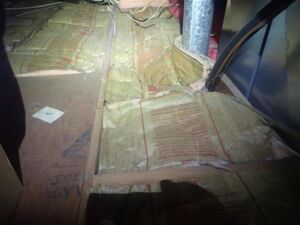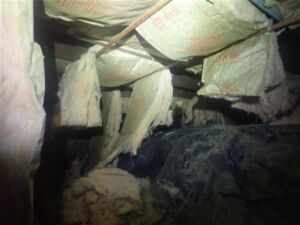
The most common type of fiberglass batt insulation is easily identifiable by the brown paper vapor barrier that covers one side of the insulation. In older homes it is common to find fiberglass batts throughout the home (floors, walls, ceilings). However, over the years buildings standards have developed and insulation requirements have changed. Modern building standards in Oregon require a minimum R-value (insulation value) of R-49 in flat attics, R-30 under floors, and R-21 in walls. While some insulation manufacturers do make fiberglass batt insulation that conforms to these requirements, it is more common to find loose fill fiberglass insulation in attics. Another reason for this is because it is easier to blow loose fill insulation into a new home towards the end of the construction process than it is to lay down batts throughout the attic.

The primary issue with installing fiberglass batts backwards is that it can trap moisture. Air contains water vapor and the levels of water vapor in the air can be particularly high in cool, damp areas, such as crawlspaces. When water vapor in the air is subject to changes in temperature it condenses. Air will inevitably make its way behind insulation through the small gaps around joists and studs. If the vapor barrier on fiberglass batt insulation is installed the wrong way the condensation formed from water vapor in the air will become trapped behind the insulation.
There are multiple potential concerns associated with wet insulation. The first issue is that the insulation will compress, which diminishes its R-value. Wet insulation is also much more likely to come loose in areas where it is hung from above, such as basements and crawlspaces. The second issue is the potential damage to the home materials that is associated with trapped moisture. Moisture that is trapped against wood joists, studs, the subfloor, and other home materials can decay over time. Additionally, trapped moisture, particularly in unfinished areas, creates an ideal breeding ground for microbial growth, such as mold. Because the insulation is covering the affected areas a homeowner may not know there is an issue until significant damage has already occurred.

